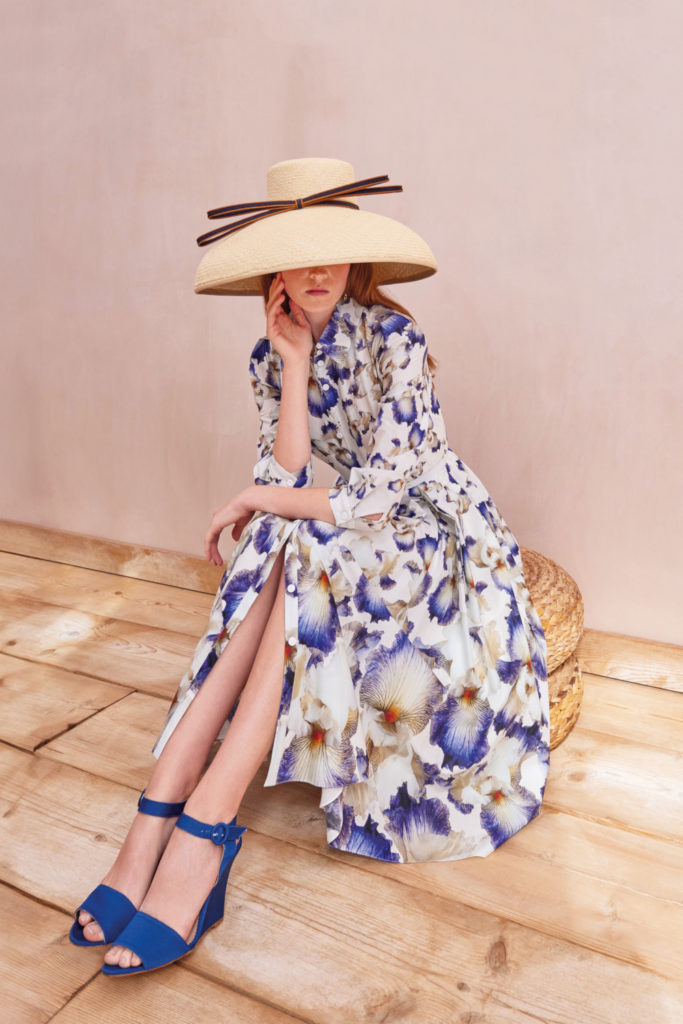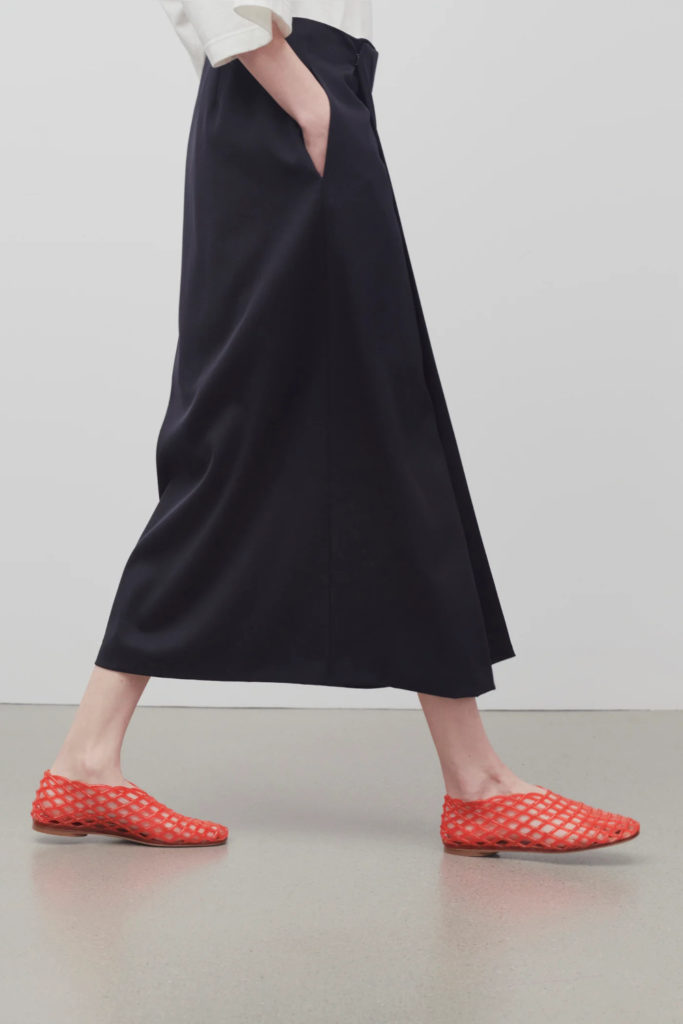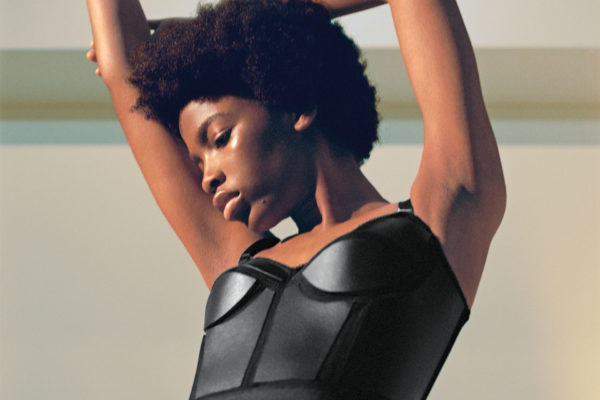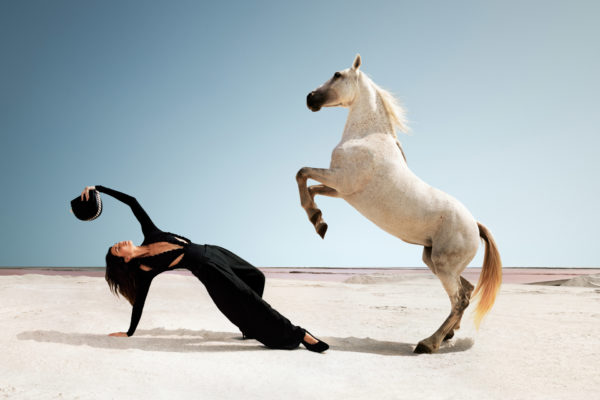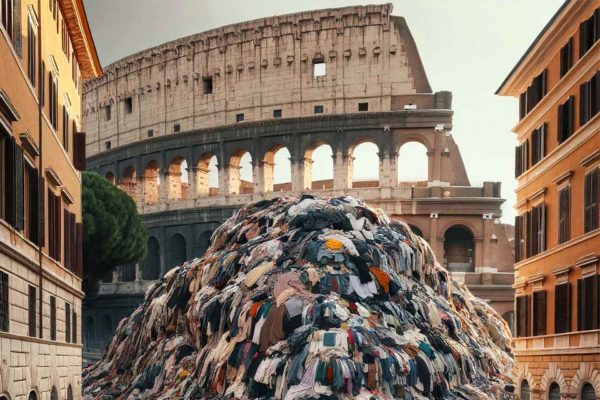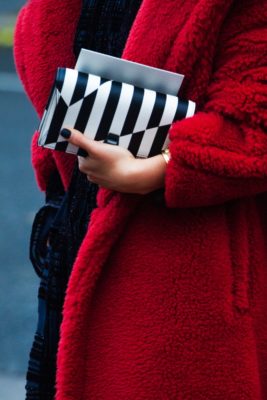How The Dutch Are Leading The Way In Fashion Innovation
By
1 year ago
Fashion seems like a much brighter place in the Netherlands
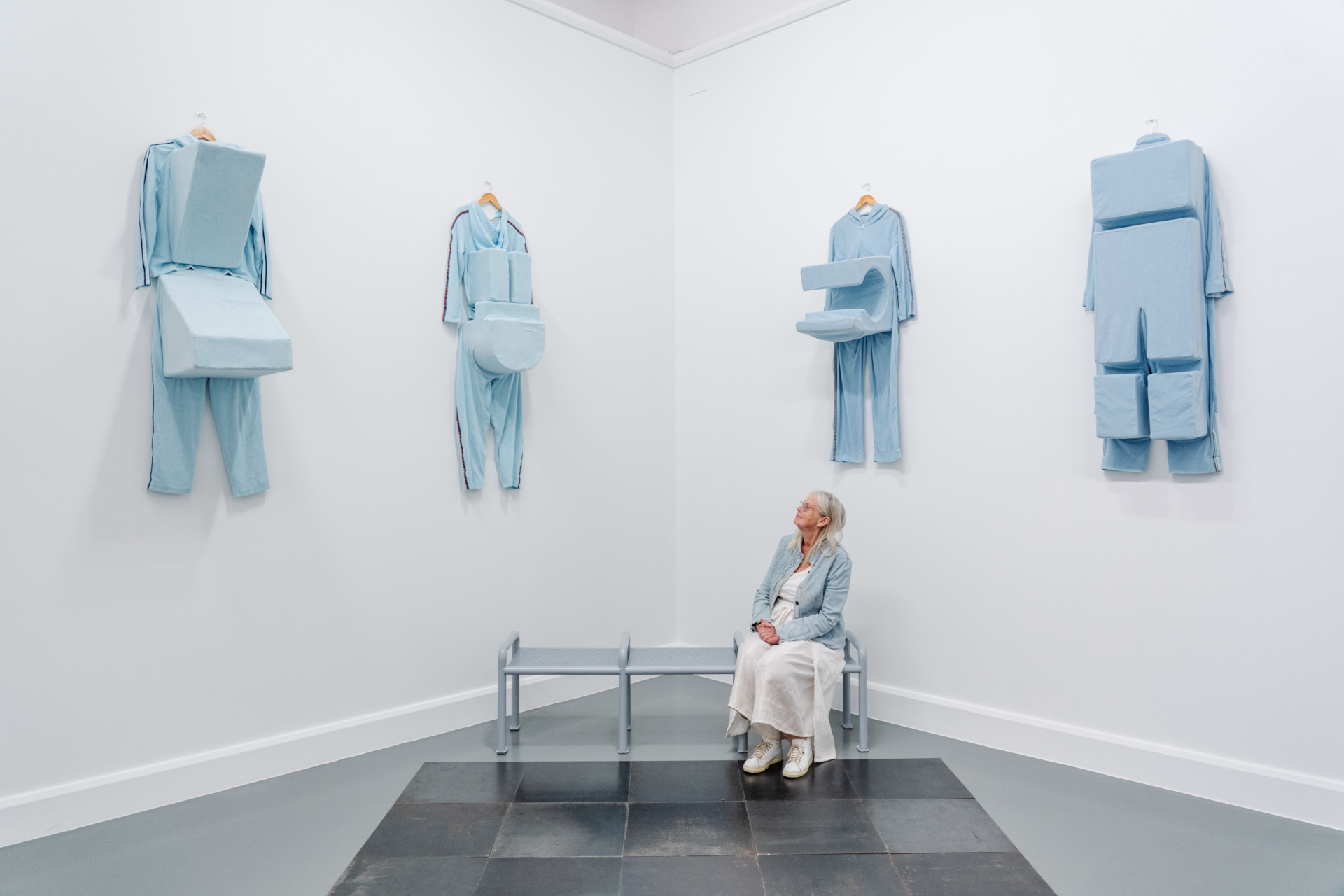
It might have taken longer than we would have liked, but fashion is starting to wake up to the realities of its impact on the planet. And the country leading the way? Unsurprisingly, it’s the Netherlands. Charlie Colville makes her through two of the country’s unsung hero cities, Eindhoven and Arnhem, to see just how the Dutch do it better when it comes to sustainable fashion design.
The Country & Town House Responsible Buyers’ Guide
Sustainable Fashion: How The Dutch Do It Better
Heading over to the Netherlands is a treat at any time of the year. Sitting pretty at the top of Europe, it’s the home of windmills, tulips, the Dutch Masters and an excellent cycling culture. But not many would know that the Netherlands is also where you’ll find some of the most forward-thinking creatives – both homegrown and international creatives called in by the promise of like-minded people – setting the stage for the future of fashion.
My trip to the Netherlands, a quick sojourn spanning less than 72 hours, was filled with meetings with some truly brilliant people and their brilliant ideas – far too many to list them all here, really. But below, I’ll highlight some of the platforms, creatives and brands giving hope to the industry (and how they’re doing it).
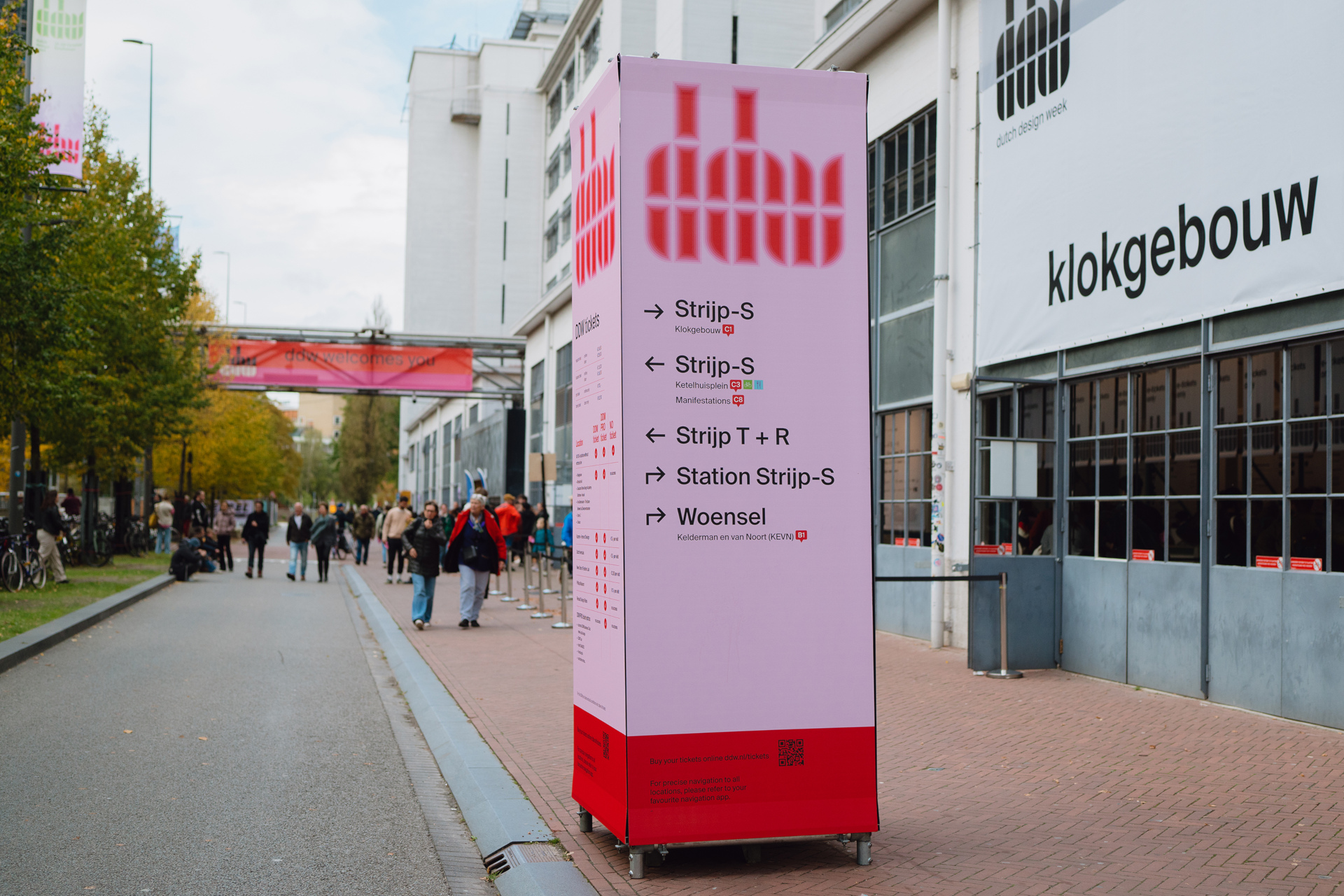
Strijp S Klokgebouw, Dutch Design Week 2023 (c) Cleo Goossens
Regeneration
We arrive in Eindhoven with Dutch Design Week in full swing, with over 2,600 designers showcasing their work in more than 110 locations across the city. One of the main goals of the week-long event is to nurture young talent through these displays, as well as celebrate the ways we can think above and beyond when it comes to fashion and design – and at New Order of Fashion, this was highlighted in an exhibition dedicated to regeneration.
An international talent platform, New Order of Fashion (NOoF) works with fashion design talents from all over the world to empower them to make the right choices during the design stage (where 80 percent of a garment’s sustainable impact is determined). ‘We explore, we educate and we activate,’ says Helen Milne, LAB Operational Manager at NOoF. ‘We advise on material understanding – what are the materials local to you, where can you get them from – and we teach from school to university level. We’ve also worked with brands on one-off workshops to show them what is happening in their supply chain system and how it can be positively changed. We also try to educate as much as possible through our activations.’
One such activation was being shown at Dutch Design Week. The platform welcomed 12 recently graduated fashion students from the Netherlands and abroad to take part in Regeneration: Fashion from the Ground Up, an exhibition in NOoF’s LAB focusing on the process of renewing and repairing after something has been depleted, damaged or lost. Here, Eindhoven becomes the stage for collaboration and exchanging ideas.

New Order Of Fashion, Dutch Design Week 2023 (c) Max Kneefel
As Helen leads us through the LAB, she highlights how each creative has approached the theme. She gestures to a woven dress on a hanger: ‘Over here, we have a piece by Katerina Knight. Katerina worked in the fast fashion industry for a long time, and it eventually made her sick from the stress of the pace and the materials used. Many of the materials used in fast fashion are toxic, and synthetic fibres can be really bad for your skin. She moved away from that path, and around the same time looked into having her own allotments – which she now incorporates into her work. You can see on this piece here that, in every stitch, there is a lavender seed as well. This takes thousands of hours of work to make, and you can these little seeds of love. It’s really the opposite of fast fashion; how can you grow the materials, how can you meditate during the time you’re creating something, how can you make it a healing experience?’
She then gestures to a wax hand decorated in neatly corded stems and leaves. ‘This is one of our artistic research projects, which we’re able to fund for a small amount of time,’ she says. ‘This design was created by Priss Niinikoski created using waste from the flower industry, from rose stems that are cut away. We have a huge amount of natural waste happening through multiple industries – and, of course, flower waste happens in every country. When you dry out rose stems, you end up with something that’s more like a leafy fibre, which you can manipulate by clamping and hand-twisting it. This is a process of cordage; it’s the first way that people made rope. Priss looked at traditional lacemaking techniques, crafts that are dying out because of their slowness. In her research, she’s trying to answer the question of what it means to create something with no impact. She’s using waste and producing something that is going to decompose again later in life, but it wall also last and remain strong for a long time.’
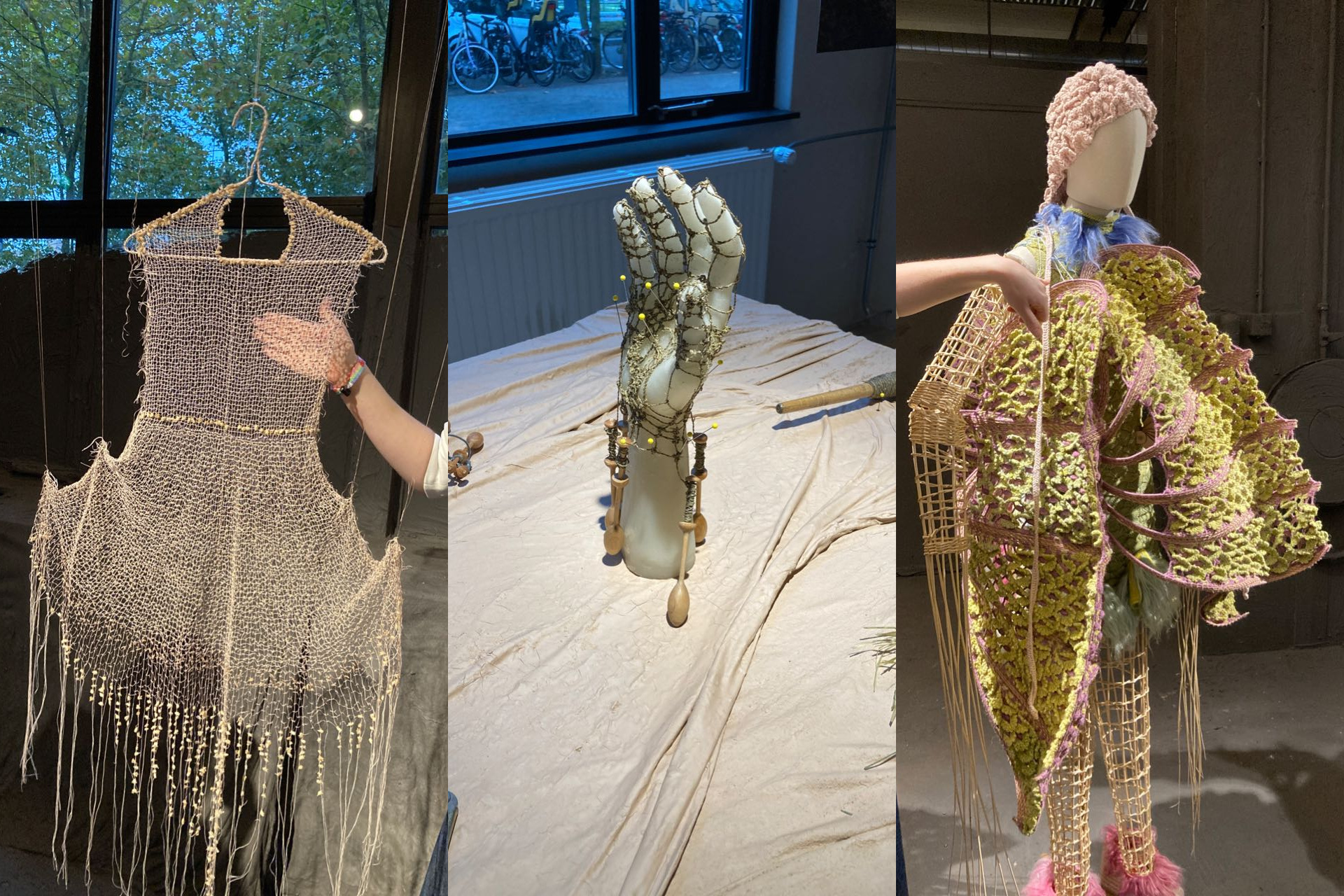
Regeneration: Fashion from the Ground Up at New Order of Fashion, Dutch Design Week 2023 | (L to R) Katerina Knight, Priss Niinikoski and Silvia Acien Parrilla
Helen also shows us the work of Spanish creative Silvia Acien Parrilla, who presents a colourful, woven design. ‘I would say that this is a piece that most holistically encompasses all the ideas of regeneration,’ she explains. ‘Silvia uses nettle and pineapple fibre, which are dyed with invasive dye plants and bacteria. This was actually a collaboration between Silvia and another one of our creatives, Xue Chen – so the knowledge she got about dyeing actually came from Xue, who studied bio design.’
It’s the collaborative aspect that make regenerative design all the more possible, Helen tells us. Collaborative growth, working across disciplines and with people from all over the world, seems to resonate as a key means of achieving change. ‘We’re starting to see more and more designers who want to work in this way,’ says Helen. ‘We need to collaborate with specialists and scientists so we can get a solid understanding of how these crafts really work. That’s really where a beautiful union can happen, and it’s something we really try to encourage.
‘We’re trying to kind of work through this idea of dissolving the ego,’ she adds. ‘The star designer doesn’t really need to exist anymore. We’re going to be so much stronger if we work collaboratively, if we share our knowledge as openly as possible. We don’t need to guard knowledge so closely if we actually want to achieve sustainable and regenerative goals. It’s a big shift in mindset for people – the real competition in the fashion industry is against the climate crisis, it shouldn’t be against each other.’
Material Innovation
From regeneration to innovation, a trip to the BioArt Laboratories just outside the city of Eindhoven shows just how young creatives are examining the intersections of science, nature, technology and creativity. Home to a ‘sustainable bio-based community’, BioArt Laboratories offers an environment for experimentation and developing new ideas – and for Dutch Design Week, the space was taken over by students from various Dutch schools and universities who were presenting their work and research.
It was here that we found INNOVY, a material development project set up by Amsterdam Fashion Institute students Tim Couwenberg and Nicolai Haas. Bringing together cutting-edge technology and natural materials, INNOVY was created to help reimagine future design possibilities with an emphasis on introducing more biodegradable materials into fashion, interior design, packaging and beyond. And for Dutch Design Week, INNOVY’s co-founders presented AUSTRAL, a small display dedicated to the eponymous plant-based biomaterial– which, we’re told, could be the future of sustainable design.
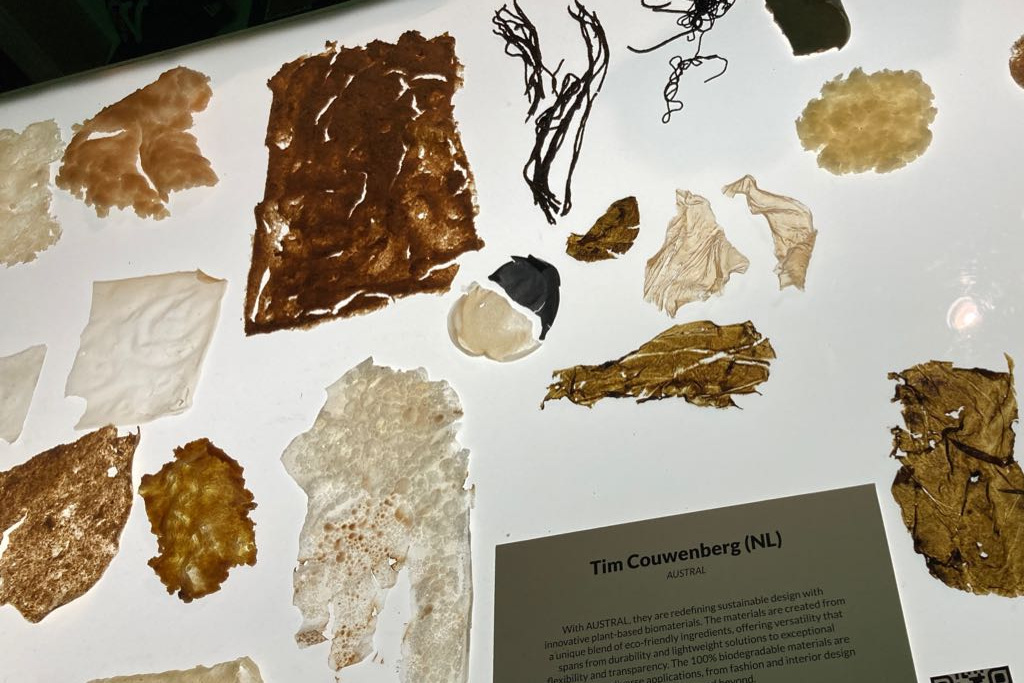
INNOVY’s ‘Austral’ display at BioArt Laboratories during Dutch Design Week 2023
‘We’re trying to get austral into the production sector to replace plastic materials,’ says Nicolai. ‘It’s created using carboxymethylcellulose and sodium alginate, derived from brown algae, and other organic residues.’ The resulting multi-functional substance can be used on its own, or mixed with other natural materials for both hard constructions and flexible, transparent materials.
One area of use INNOVY are working on is glue. Synthetic glues are comprised of plastic polymers, and when applied to and used in fabrics (like polyester) it makes the overall garment all the more difficult to break down and recycle. ‘We’re working with a manufacturer in Italy to implement our material,’ adds Nicolai. ‘You wouldn’t be able to recycle the fabric completely without it – when a natural fabric is comprised of as little as one percent of polyester it cannot be recycled. In contrast, if you used our material to bind to bind fabric, you could later remove it by running it through water [austral is non-toxic, so water can be pumped through it in a circuit without being contaminated]. The material would disappear in the water, leaving behind the natural material. This process can be done with wool, cotton, jeans – austral could help keep a lot of these materials as natural as possible.’
Currently, INNOVY works with manufacturers rather than with fashion brands directly. ‘We try to go to manufacturers, because that’s where brands are buying their materials. It’s the production market that will have a really big impact on the environment,’ says Nicolai. ‘There are millions of metres of natural fabrics produced every year, but so many of them contain plastic fibres – so that’s where we see ourselves having more impactful results.’
View this post on Instagram
Circularity
With Dutch Design Week now finished, we made our way down to Arnhem. This buzzy city, nestled in the east of the Netherlands, is home to a plethora of fashion brands that design with the planet in mind – all you need to do is hop on your bike and cycle your way through the bike-friendly streets for a quick, whistle-stop tour.
Our first stop: Hul le Kes. While only a few years old, the brand has garnered a cult following for its ‘imperfect beauty’ approach, specialising in made to order, circular items made by a close-knit team. ‘We started our career quite commercial, but we soon lost our love for fashion,’ says Sjaak Hullekes, co founder of Hul le Kes. ‘So we asked ourselves which rules we could give our brand. The first was that we should only work with existing materials – it was quite a challenge, but we wanted to highlight the possibilities of fashion in this context as we do upscale a lot.’
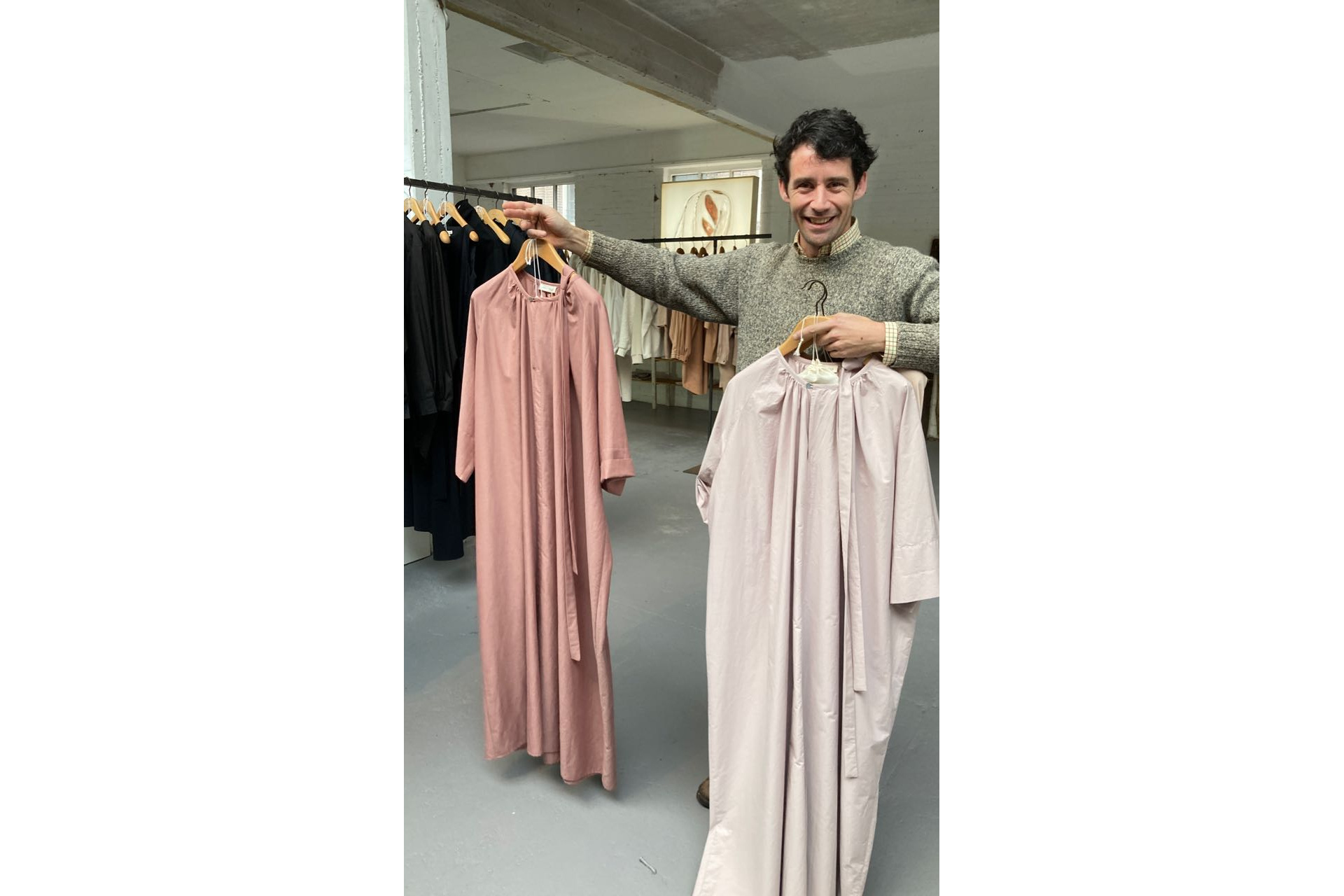
Sjaak Hullekes, co-founder of Hul le Kes
The brand sources a lot of its materials from the Salvation Army. ‘They’re one of the best places for secondhand materials – there are a lot of white blankets, bed linens and cloths that get thrown away,’ Sjaak tells us. It’s the white linens they prefer; one, because they’re often not able to be resold by stores due to tarnishes, and two, because they’re much easier to dye.
‘We take those materials and use them for our own projects,’ adds co-founder Sebastiaan Kramer. ‘We dye our garments with natural ingredients at our studio. We first started by dying waste with waste, using waste from restaurants – like seeds, peels and onions – but now use more natural ingredients in the dying process.’
Other materials come from old, discarded and deadstock materials, from antique French blankets to overstock fabrics sourced from Germany and the Netherlands. Speaking on the deadstock materials, Sjaak tells us how, ‘If there’s a client that wants to create a new fabric, the first and last 500 metres of that fabric are usually discarded as they don’t want to risk anything going wrong with the design – like an old cassette tape; if it’s played a lot, you might notice the last song sounds a little off. We collect those fabrics.’
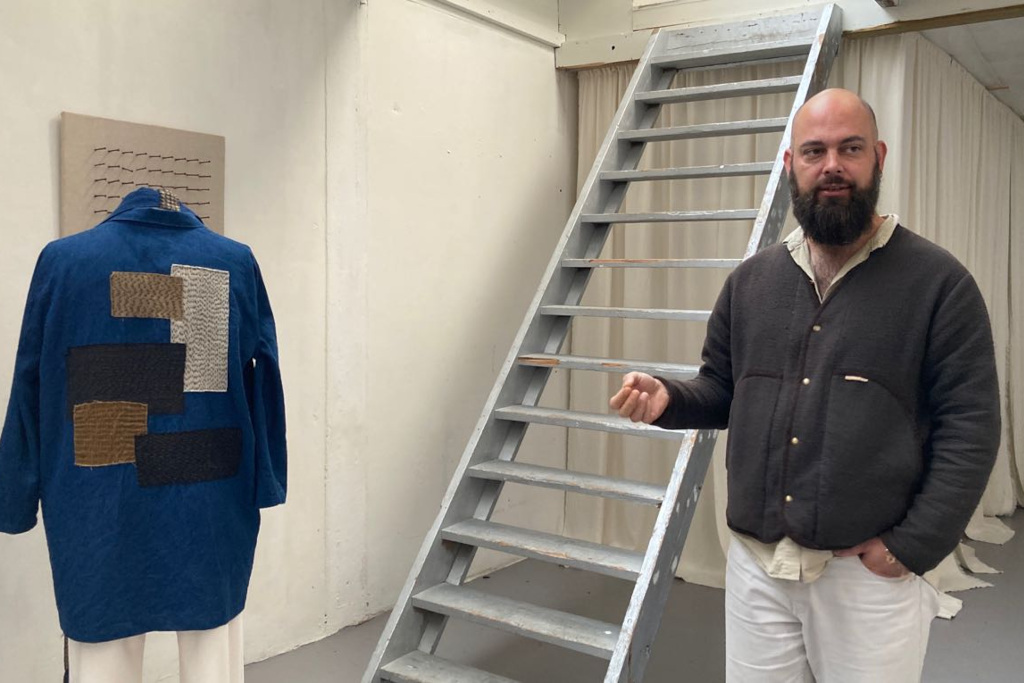
Sebastiaan Kramer, co-founder of Hul le Kes
But circularity isn’t limited to materials at Hul le Kes – Sjaak and Sebastiaan show us that it’s about investing back into your local community too. Part of the brand’s ethos is a mission to prioritise the ‘revaluation of people’, celebrating the craftsmanship of the fashion and textiles industry through the hands that make their garments. This is where its Manufacturing Studio and Recovery Studio come into the picture; at the Manufacturing Studio, Hul le Kes (in collaboration with Rijn IJssel and Scalabor) offers vocational education and routes for people that have become distanced from the label market. Meanwhile, in the Recovery Studio, the brand works with Driestroom and Scalabor to offer opportunities for those who suffer from mental or psychological problems. It’s these people that help bring Hul le Kes garments to life.
‘We believe that working with a needle can have a healing approach,’ explains Sjaak. ‘It’s really nice to have the team in-house, because you can see each individual grow and get their self-esteem back. We’re super proud of what we do – we do it all together. I’m not the designer; we’re all the designer. It’s also nice that I don’t have to send anything away for it to be created.’
THE FINAL WORD
Do the Dutch do it better? Our answer is yes. Brands are young creatives are becoming more socially and environmentally aware than ever, employing practices that seem a little too far away from what we see from other designers and well-established labels. The future of fashion looks promising in the Netherlands – and the Dutch are more than happy to welcome us along for the ride.
VISIT
While the 2023 edition of Dutch Design Week has finished, fear not: the festivities return to Eindhoven every year in October. You can find out more at ddw.nl
Arnhem is currently preparing for its 2024 State of Fashion Biennale, under the theme ‘Ties That Bind’, which runs from May to June next year. For more information, please visit stateoffashion.org
You can travel to the Netherlands via the Eurostar, with departures from St Pancras International. eurostar.com

